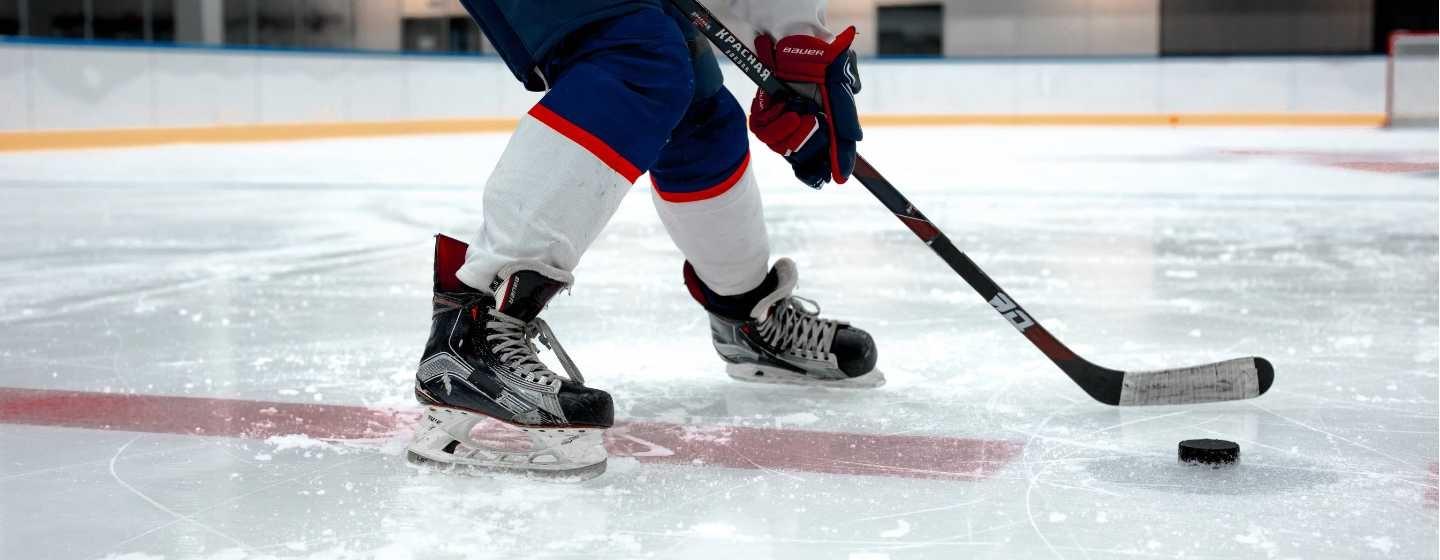How a Hockey Rink Is Made


As the Carolina Hurricanes prepare to host the Washington Capitals in an NHL Stadium Series game at NC State’s Carter-Finley Stadium in Raleigh, we thought it was time to talk about the science of ice.
Or rather, the science of the ice rink.
Although ice is simply frozen water, it turns out that not all ice is the same. The temperature of the ice makes a big difference.
Hockey players prefer what is known as “fast ice,” which is harder and colder with a smooth, slippery surface. “Slow ice” is softer and often has a rough surface. While hockey players want to move fast across the ice, figure skaters often prefer slower ice as it holds up better to their graceful jumps and landings.
Water purity plays a big part in making the perfect ice for hockey. Ice made with water that contains dissolved alkaline salts may have a sticky feel to it. Those salts also dull the blades of the players’ skates. That’s why many ice rinks now use water purifiers to filter the water used for the ice.
The technology used in indoor ice rinks is the same type found in refrigerators and air conditioners. Brine water, which is a salt and water solution, is pumped through a system of pipes under the ice. Those pipes are built into the concrete that makes up the arena floor. Brine water freezes at a lower temperature than plain water, thus allowing it to stay a liquid as it moves through the pipes but still cold enough to freeze the water poured onto the concrete floor.
The ice on the rink is built in layers. There can be as many as 12 or more layers, and those layers vary in thickness, somewhere between 1/32 and 1/16 of an inch. The first layer is sprayed directly onto the concrete floor and freezes almost immediately. The second layer is then applied and painted white to contrast with the black puck. The third layer seals the lower two layers. Lines and logos are painted directly onto the fourth layer of ice. Eight to ten additional layers are applied after that to finish the rink. The entire process can take almost 48 hours. The ice is only about one inch thick when everything is finished.
The official size of an NHL rink is 200 feet long and 85 feet wide. To make an ice sheet with this large surface area requires about 10,600 gallons of water. That’s about half the volume of a one-car garage.
At PNC Arena in Raleigh, where the Carolina Hurricanes play, the ice stays in place for the entire hockey season. Special flooring is laid on top of the ice for NC State basketball games and other events.
Once the ice sheet is built, it’s the job of the ice technician to care for its surface. That’s when everyone’s favorite ice machine, the Zamboni, comes in. The Zamboni scrapes the ice surface and collects the snow that accumulates.
The machine also puts down a thin layer of heated water (about 140–145 degrees Fahrenheit). It doesn’t melt the ice because it freezes quickly. The hotter the water, the smoother the surface it creates.
Now, who’s ready to lace up those skates and hit the rink?